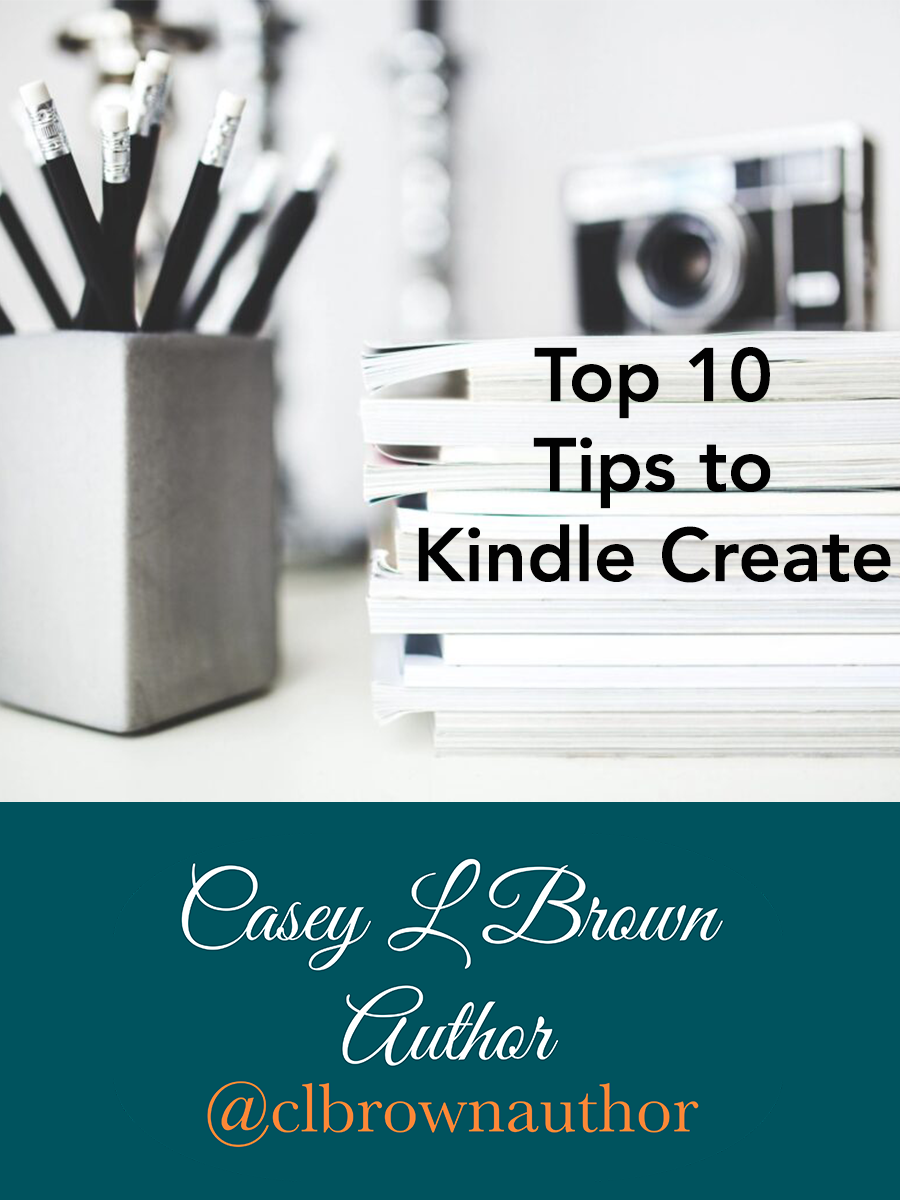
Top 10 Tips to Kindle Create
Check out these top 10 tips to using Kindle Create. These are some things that I wish I knew before I got started with my manuscript.
So, let’s say you’ve just finished your manuscript, possibly in a Word document. You want to self-publish on Amazon. Now what?

Well, there are a few ways to go about formatting your document for uploading to Kindle Direct Publishing (KDP). A sure method is using Kindle’s own Kindle Create. Once you get the hang of it, it is really easy to use, however, there are things I wish I knew before I ever uploaded my Word document into Kindle Create. These things no one tells you and you can’t seem to find the help you need within the Kindle Create community, so I am here to lend you a helping hand with these top tips to using Kindle Create!
- When you are using Kindle Create, never save anything to a flash drive. Please don’t. I learned the hard way that if you save to a flash drive, it won’t save and you’ll lose ALL of the work that you just did. It will just be gone. You have to save your Kindle Create files to the computer. I actually save them to the desktop for easy access.
- You will want to do some formatting of your Word document before you load it into the Kindle Create software. Pre-formatting your Word document will save you a lot of time and headache so you don’t have to format your Kindle Create document page by page. It’s easy to setup your Word document.
- Start with your simple manuscript. You do not want to have your own title page or table of contents because you’ll do that in Kindle Create.
- Also, get rid of any headers or footers you have or page numbers because Kindle Create will automatically do page numbering.
- Next, give your chapter titles the “Heading 1” font. Modify the “Normal” option to be single spaced with no space after paragraphs and set the first line indent to .3 inches (which I learned is standard after the fact.)
- Lastly, if you have time lapse breaks in your document make sure to use an asterisk to mark those spaces to make them easy to see/find because you’ll be formatting those in Kindle Create.
- Loading your document into Kindle Create. The next parts are pretty easy. Open Kindle Create and load in your file. Double check that it is detecting the right chapter titles and accept them. Then, it is super easy to create your front matter and back matter. Simply click the plus button on each and you can create your title page, table of contents (which should auto-generate), copyright page, and others!
- Choose your theme. You will want to choose your theme right away so you can see how it will look as you’re formatting. This option is located in the top right corner under theme. Choose one appropriate for your genre.
- Choose your print settings. This is also in the top right corner. Use this to choose where you want your page numbers to display and your name or chapter titles.

- How to insert drop caps. This isn’t really a hidden thing, but I didn’t find it right away. I didn’t even think of it right away. It’s located under formatting. Simply highlight the letter you want to apply the setting to and turn on the button for drop cap. You will have to go through chapter by chapter to do this.
- Insert separators at your asterisk or time lapse locations. Some authors prefer to use an asterisk in their manuscript, some prefer to use just a double return. I gave you the tip to use the asterisk earlier because you will have an easier time spotting them in Kindle Create. You’ll need to go through page by page to insert the separators at the asterisk locations.
- Double check your work and have someone else page through it too. This will help ensure that you don’t miss anything before you generate your file.
- Generate your “.kpf” file. You will need to generate the actual file you’ll upload to KDP. It’s not just the file you’ve been working on. It is not the “.kcb” file. To generate your file to upload to KDP, simply click “Publish” in the upper right corner in Kindle Create. This will generate your “.kpf” file which you will upload to KDP.
- Uploading your file to KDP. Where it says “manuscript file” is where you’ll upload your “.kpf” file. Don’t panic like I did! I couldn’t find “.kpf” when I was looking at the acceptable manuscript file types. It is odd that KDP doesn’t even list its own file type as an acceptable one, but it is! And make sure your preview your files to double check it looks good. There is also software that you can download that allows you to preview it before you upload to KDP and that is called the Kindle Previewer.
I hope these 10 tips to Kindle Create help you navigate it more successfully. Self-publishing is stressful enough without having to blindly use an unfamiliar software. Also, use the help articles in the KDP community. They don’t have answers to all of the questions, which is why I provided you these tips, but they do have some good resources and you can ask your own questions.
Best wishes,
Casey L Brown


